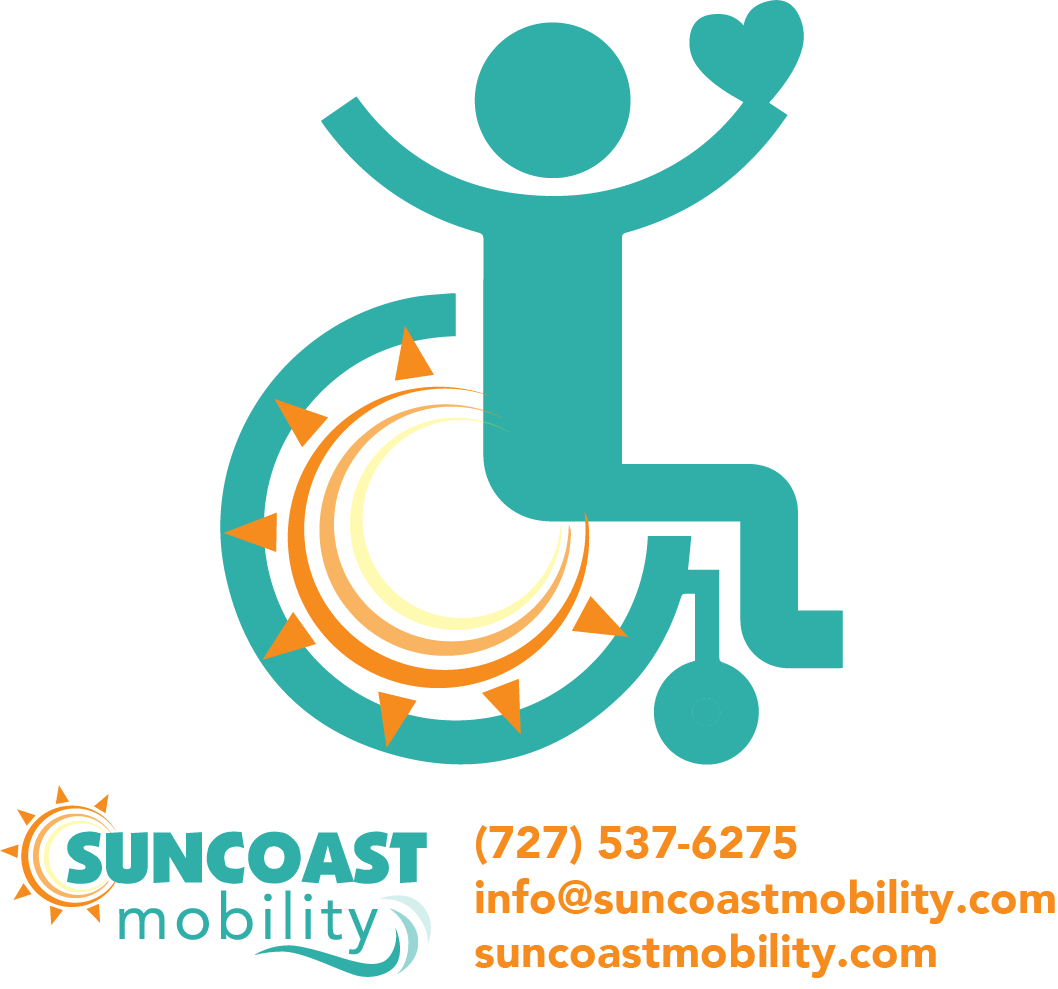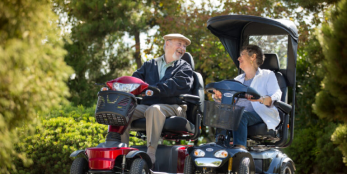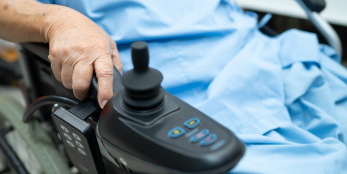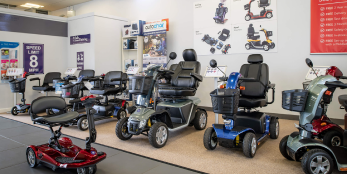Table of contents
Travel Battery Guidelines for Mobility Scooters: What You Need to Know
If you're planning a trip and use a mobility scooter, one of the most important things to consider is your scooter’s battery. Whether you're flying, cruising, or hitting the road, understanding travel battery guidelines ensures a smooth journey with no surprises at the airport or port.
In this comprehensive guide, we’ll walk you through the key regulations, tips, and best practices for traveling with a mobility scooter battery—especially when it comes to lithium-ion batteries, airline compliance, and safe handling.
Why Battery Guidelines Matter
Mobility scooter batteries are classified as hazardous materials when traveling, especially if they’re lithium-based. Most airlines, cruise lines, and transportation agencies follow strict rules to minimize safety risks. If your battery doesn’t comply with these rules, it may be denied boarding.
Understanding these travel battery guidelines helps you:
Avoid delays at security checkpoints or gate boarding
Prevent damage or confiscation of your scooter or battery
Ensure compliance with TSA, FAA, DOT, and international regulations
Protect your mobility and independence while traveling
Common Types of Mobility Scooter Batteries
Mobility scooters generally use one of the following battery types:
1. Sealed Lead-Acid (SLA) Batteries
-
Traditional and heavier
-
More tolerant to travel conditions
-
Typically allowed on planes and cruises with minimal restrictions
2. Gel Batteries
-
A type of SLA battery with a gel electrolyte
-
Spill-proof and airline-approved
-
Heavier than lithium-ion but more durable
3. Lithium-Ion (Li-ion) Batteries
-
Lightweight, modern, and commonly used in travel scooters
-
Subject to strict airline regulations due to fire risk
-
Most airlines limit the size and quantity allowed onboard
Airline Guidelines for Mobility Scooter Batteries
If you’re flying with your scooter, here are the battery guidelines you need to follow:
🔋 FAA Battery Limits
The Federal Aviation Administration (FAA) allows:
-
Up to two spare lithium-ion batteries
-
Each battery must not exceed 300 watt-hours (Wh)
-
If carrying two smaller batteries, each can be up to 160 Wh
Most travel scooters come with removable lithium-ion batteries in the 200–288 Wh range, making them airline-compliant. Always check your battery label for the watt-hour (Wh) rating—it’s usually printed near the specifications.
✈️ Carry-On vs. Checked
-
Batteries must be carried onboard in your carry-on bag, not checked luggage.
-
If the battery is non-removable, it must be securely attached and protected from short circuits.
-
Airlines may ask you to remove and store batteries separately, especially if they are lithium-ion.
✅ TSA & Airline Approval Tips
-
Contact the airline at least 48 hours in advance
-
Bring documentation showing your scooter’s battery type and watt-hour rating
-
Label batteries clearly
-
Use a battery travel case or fireproof pouch if possible
Cruise Ship Guidelines for Mobility Scooter Batteries
Cruise lines are generally more lenient than airlines, but they still follow safety protocols:
⚓ Typical Cruise Battery Rules:
-
Gel, SLA, and lithium-ion batteries are all permitted, but lithium-ion must be:
Sealed
Non-spillable
Not exceeding 300 Wh
Scooter must fit through cabin doorways (usually under 26" wide)
Battery must be in good working condition and securely mounted
Some cruise lines require advance notification if you’re bringing a lithium-powered scooter. Always check with your cruise line before departure.
International Travel Considerations
When flying internationally, each country may have slightly different battery guidelines. Some European and Asian carriers have stricter rules than the FAA.
Tips for International Travel:
Research the destination country’s aviation authority (e.g., EASA in Europe)
Print a copy of your scooter manual with battery specifications
Carry a physician’s note if needed (some carriers ask for medical justification)
How to Check Your Battery’s Watt-Hour Rating
Not sure if your battery is compliant? Here’s how to check:
⚙️ Use this formula:
Volts (V) × Amp-hours (Ah) = Watt-hours (Wh)
For example:
24V × 10Ah = 240Wh
Most travel scooters (like the Buzzaround CarryOn, EV Rider Transport AF+, or Mojo Auto-Fold) have removable lithium batteries in the 240–288Wh range—making them compliant with most travel rules.
If your battery exceeds 300Wh, it may be denied boarding or require special approval.
Safe Packing & Handling Tips
Proper packing can prevent damage or safety issues during your trip.
📦 Packing Tips:
-
Use the original battery case or a padded fireproof pouch
-
Tape over the terminals with electrical tape to prevent short-circuits
-
Keep the battery in your carry-on luggage, not checked
-
Store it away from metal objects (like keys, coins)
🔒 In-Transit Handling:
-
If folding or disassembling your scooter, remove the battery first
-
Avoid dropping or crushing the battery
-
After the trip, inspect the battery for any swelling, damage, or odd smells
Choosing a Travel-Friendly Scooter Battery
If you travel frequently, consider choosing a scooter with:
A removable lithium battery under 300Wh
Airline and cruise line approval
A compact folding or split-frame design
✨ Top Travel Scooters with Airline-Compliant Batteries:
-
Buzzaround CarryOn
-
Solax Transformer
-
EV Rider Transport AF+
-
Enhance Mobility Mojo Manual/Auto-Fold
-
Pride iGo Travel Scooter
These models are specifically designed with air travel in mind and come with easy-to-remove batteries that fit airline requirements.
What mobility scooter batteries are allowed on planes?
Mobility scooter batteries permitted on planes are typically removable lithium-ion types that meet size and safety standards. Non-spillable wet (absorbed electrolyte) batteries are also commonly accepted. However, lithium metal batteries are generally prohibited for use with mobility devices.
What mobility scooter batteries are allowed on cruises?
Most cruise lines allow mobility scooters with sealed, non-spillable batteries like gel-cell or lithium-ion types and may enforce size restrictions. Wet cell or traditional lead-acid batteries are usually not accepted. Always confirm with your cruise line, as policies can differ between companies.
Can I bring my mobility scooter on a cruise?
You can bring a mobility scooter on most cruise ships to help you move around comfortably during your trip. Many ships are equipped with accessible public areas, wide corridors, designated wheelchair seating, automatic doors, accessible staterooms, and public restrooms designed for mobility needs.
Can I bring my mobility scooter on a plane?
Yes, you can bring a mobility scooter on a plane, but you must follow specific regulations—particularly concerning the battery. Airlines typically classify mobility scooters as assistive devices, allowing them to be checked at the gate or as baggage. However, batteries often require special handling and may need to be removed or carried onboard.
How much does it cost to take a mobility scooter on a plane?
Bringing a mobility scooter on a plane is typically free, as it’s considered assistive equipment and doesn’t count toward your baggage allowance. Airlines are required to accommodate passengers with disabilities and their mobility devices at no additional charge. To ensure smooth handling and avoid complications, it’s important to notify the airline in advance—ideally at the time of booking.
How much does it cost to rent a mobility scooter on a cruise?
Renting a mobility scooter for a cruise usually ranges from $175 to $250 for a 7-day period, though prices can vary depending on the port and scooter model. Companies like Scootaround often offer multi-day discounts, so the longer your rental, the more you can save.
Final Thoughts
Understanding travel battery guidelines for mobility scooters is key to a smooth and stress-free trip. Whether you're flying to a new destination, boarding a cruise, or taking a cross-country road trip, the right preparation can make all the difference.
Before you go:
✅ Know your battery type and watt-hours
✅ Notify your airline or cruise line in advance
✅ Pack safely and follow TSA/FAA guidelines
✅ Choose travel-approved scooters for hassle-free boarding
📞 Need Help Choosing a Travel Scooter?
Choosing the right mobility scooter for travel can be overwhelming—especially when it comes to understanding battery regulations, airline requirements, and what will actually fit in a trunk or cruise ship cabin. That’s where we come in.
At Suncoast Mobility, we specialize in airline-compliant, portable mobility scooters that are designed with travel in mind. Whether you're flying domestically, boarding a cruise, or simply need a compact model for easy transport, we’ll help you find the perfect scooter to match your lifestyle and mobility needs.
Our team is here to:
Explain the differences between lithium, gel, and SLA batteries
Help you choose a model with removable batteries under 300Wh
Guide you through FAA and cruise line compliance
Provide tips on packing, safe transport, and documentation
Recommend scooters that are lightweight, foldable, and easy to carry
We take the guesswork out of traveling with mobility equipment so you can focus on enjoying your trip. Don’t let battery restrictions or complicated policies hold you back—we’ll make sure you’re travel-ready.
📲 Contact us today at 727-537-6275 to speak with a mobility expert or explore our top-rated, travel-friendly scooters. Your next adventure is just a ride away!









